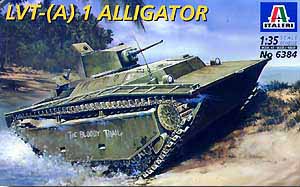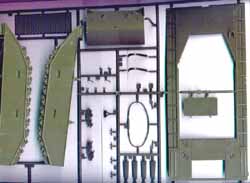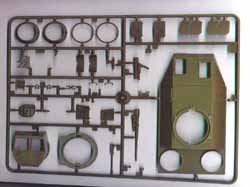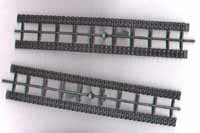ITALERI 1/35 LVT-(A) 1 "ALLIGATOR"
By Ray Mehlberger
MSRP: $35.00
|
 |
HISTORY
The LVT (Landing Vehicle Tracked) was a U.S. amphibious landing craft. In the late 1930s, Donald Roebling, a U.S. engineer, developed a light and buoyant tracked vehicle capable of traveling in the swampy Florida Everglades. It was propelled on land by its tracks, and in the water by the paddle action of the same tracks.
An improved version was purchased in small numbers by the U.S. Navy for use by the Marines and in 1941 200 "Alligators", or LVT-1's, were ordered, made of steel rather than the duralumin of the prototypes. Experience soon showed that armor protection was desirable and with additional plating and the turret and gun of the M3 "Stuart" (37mm) added it became the LVT-(A) 1 (subject of this new kit). Two .30 caliber machine-guns were also mounted, on the rear deck of the vehicle, in two open ring mounts.
The LVT's were an essential part of the U.S. operations in the South Pacific. They first were used in Guadalcanal in August of 1942. In November 1943, at Tarawa, they were first used for the assault landings. Thereafter, LVT's were invariably involved in similar operations.
In Europe they proved invaluable in the operations around the Scheldt Estuary and in the Rhine crossings.
WHAT'S IN THE BOX?:
|
|






